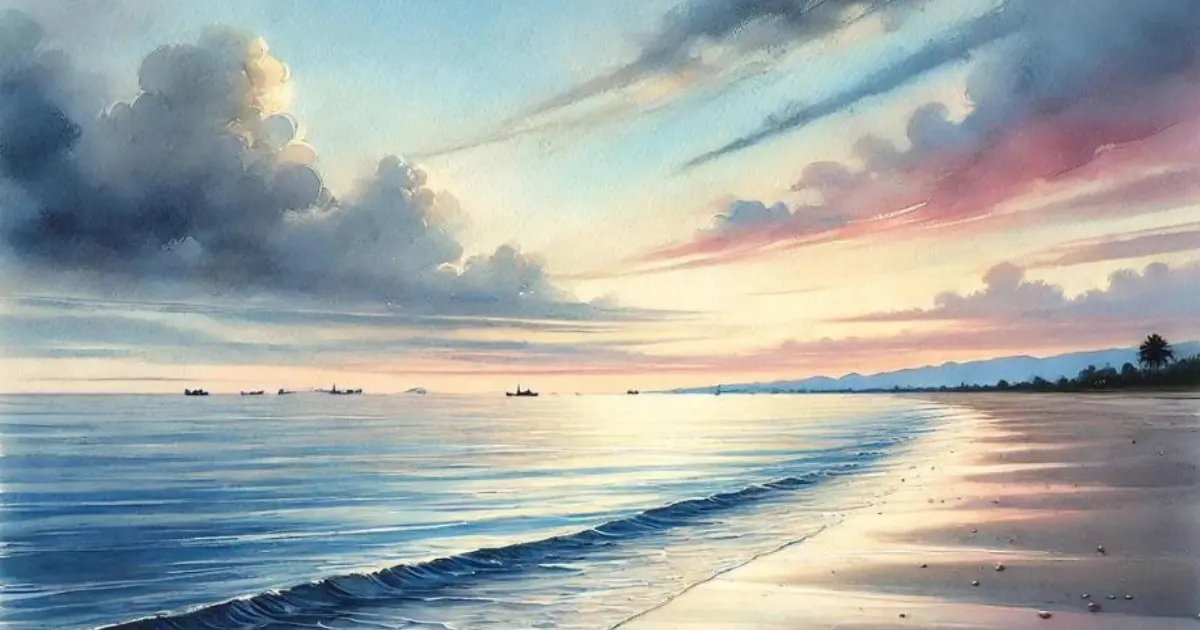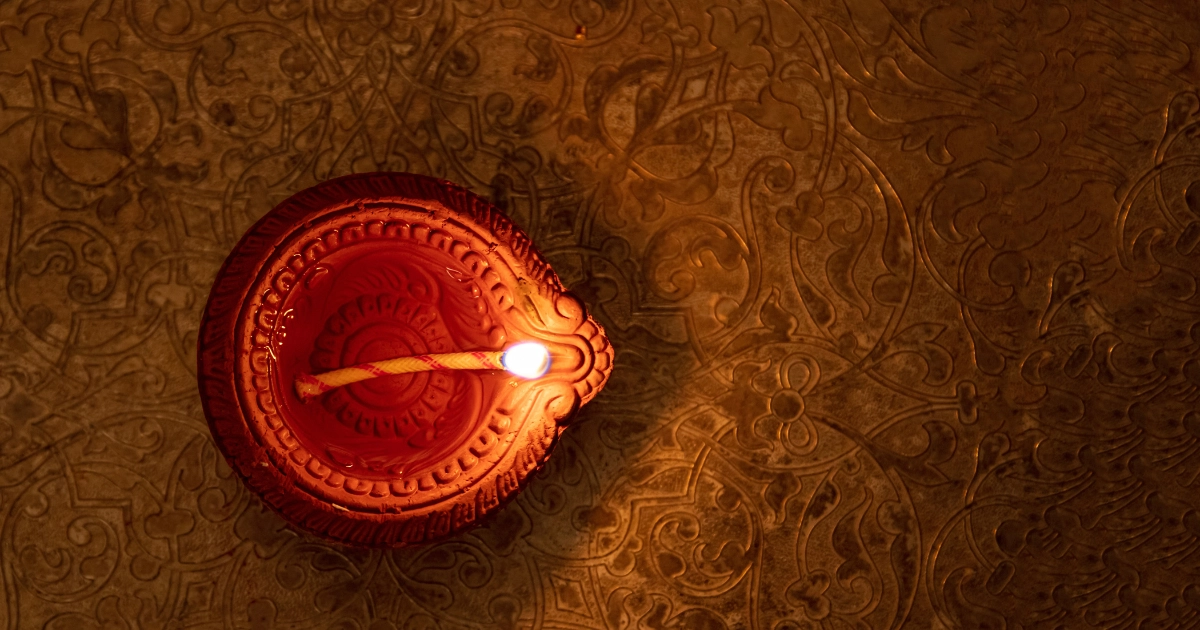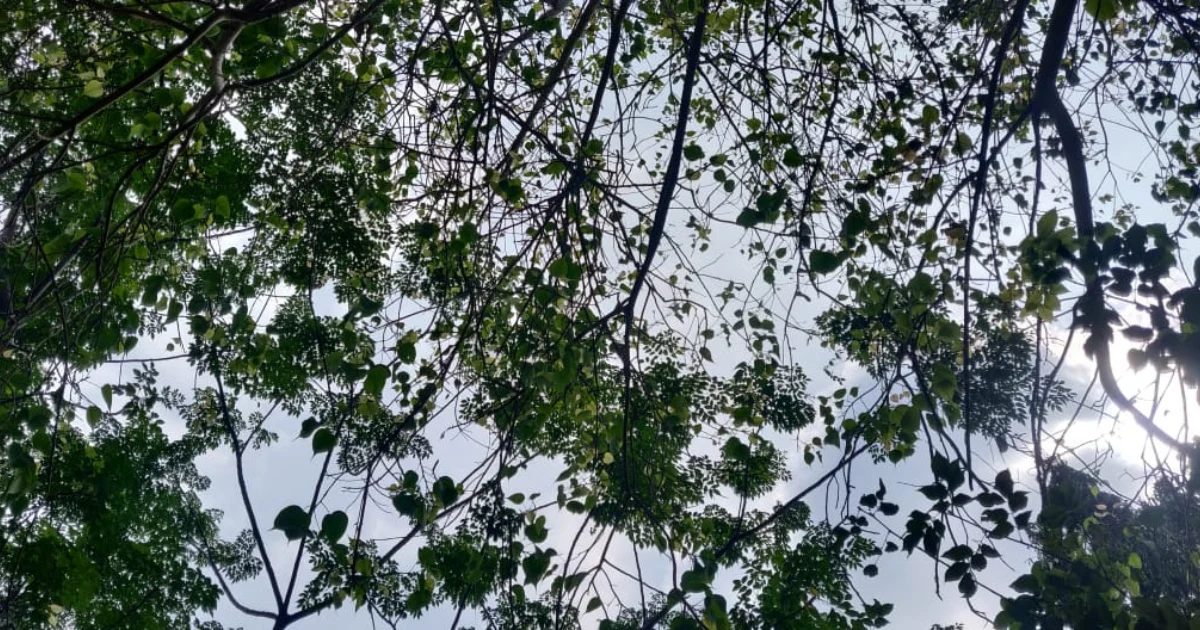A single drop of water, along with her friends, feels the heat of the Sun beckoning her. The seven-horse chariot of the fiery Vivasvān is but a passionate call to freedom - from Puruṣa to Prakṛti. The drops of water, abandoning the watery domain of stern Varuṇa, transform themselves to embrace Vāyu, the fleeting wind. They take up residence in the dark clouds, which float languidly across the skies over Jambudvīpa. Kālidāsa, in his timeless classic Meghadūta, uses the journey of these rain clouds to define the core geographic regions of classical Sanātana civilization. Months later, the pleasure barges of Vāyu finally reach the abode of the Gods in the Himālayas. The clouds release the waters contained within, and start their return journey. This cycle of the monsoons is the eternal cosmic rhythm that has made Bhāratavarṣa what it is.
The tiny drop of water, who had turned into vapor with her friends, briefly becomes a frozen snowflake before melting again. Now she too is on the way back to her home in the seas - but this time as a part of the flowing river system that carries the lifeblood of the Indian subcontinent. Lifeblood, because archaeological and cultural records show us that most, if not all the ancient centers of civilization in ancient and classical India emerged along the banks of these very same rivers. In the tenth Maṇḍala of the Ṛgveda, we come across what is popularly referred to as the Nadistuti Sūkta. The fifth verse is as follows -
इ॒मं मे॑ गङ्गे यमुने सरस्वति॒ शुतु॑द्रि॒ स्तोमं॑ सचता॒ परु॒ष्ण्या |
अ॒सि॒क्न्या म॑रुद्वृधे वि॒तस्त॒यार्जी॑कीये शृणु॒ह्या सु॒षोम॑या ||O Gaṅgā, Yamunā, Sarasvati, Śutudri (Sutlej), Paruṣṇi (Irāvati, Ravi), follow my praise! O Asikni (Chenab) Marudvṛdhā, Vitastā (Jhelum), with the Arjikiyā (Haro River) and Suṣomā (Sohan River), listen!
Translation: Ralph T.H. Griffith
The above is one of the only references to the Gaṅgā in the Vedas. It is in the Itihāsas and the Purāṇas that the river is given the pre-eminence that we observe to this day. The Ādi Parva of the Rāmāyaṇa describes the beautiful story of Gaṅgā’s arrival on Earth, and her establishment as pāpahāriṇī - one who cleanses negative karma. It is a wonderful account that sets out the contract between divine nature and the realm of the mortals - the outcome of which is manifested in the sacred geography that is Bhāratavarṣa. King Sagara, of the illustrious Aikṣvāku solar dynasty, once conducted an Aśvamedha Yajña. His sixty thousand sons began to follow the sacrificial horse as it roamed the various lands of Bhāratavarṣa for one full year. When the horse reached what is now modern day Bengal, Indra, the king of the Gods, afraid of the power that Sagara will attain if the latter successfully completed the Yajña, hid the horse at the hermitage of sage Kapila located deep under the ground in a nether region called Pātāla. The sons of Sagara, after much searching, drilled down the very bed of the sea to open a passage to the underworld and arrived at the hermitage. Upon finding the horse there, those brash ones began to loudly accuse the meditating sage of theft. Thus disturbed, the angry Kapila opened his eyes, and all sixty thousand of King Sagara’s sons were burned to ashes. The sage declared that only the touch of Gaṅgā, the heavenly river, would liberate the souls of the children of King Sagara and lead them to the world of the ancestors, the Pitṛs.
In several sources, this episode of King Sagara is actually the second stage of an extended narrative which began with the epic clash between Indra and Vṛtrāsura, long before the incident at the hermitage of sage Kapila. After Vṛtra was defeated, his companions, known as the Kalakeyas (alternatively in some cases, Kaleyas), hid below the ocean. From there they emerged every night to wreak havoc on the world, specifically targeting the ascetics and the sages, whose austerities sustain the order of the universe. The Devas, on the advice of Viṣṇu (or Brahma, depending upon the source), then requested sage Agastya to drink up the sea water. Agastya agreed, and drank up the entire water of the ocean in an instant. In this manner, the Asuras hiding in the sea bed became exposed, and were attacked by the Devas. After the Devas dealt with the Kālakeyas, they requested Agastya to restore the waters that he had drunk. The sage shook his head; he had, in fact, already digested the ocean! Yet he gave the boon that one day the divine Gaṅgā would appear on earth and renew the ocean with her waters. In the meantime, the earth grew dry and inhospitable - all living beings suffered, and awaited the arrival of the heavenly river.
It is interesting to note that the cosmological significance of both the stories have deep moral and ecological roots. What else is the Aśvamedha horse, but a symbol of unbridled progress pursued by an obsessed humanity? In both Vedic and Puranic literature, we find stories which caution us against excesses. While the Aśvamedha Yajña was the premier Vedic sacrifice, we often come across stories where kings undergo tragedies if they are consumed by overambition. The lessons are relevant even today - in our obsessive chase for progress, are we not often crossing the boundaries of nature and inviting our own destruction? When the Devas request Agastya to drink up the waters of the ocean, they end up condemning all the innocent fish who had made it their home. Thus, in order to defeat a great evil, an even greater disaster was unleashed. Sage Agastya (and in fact any great Vedic sage that finds mention in the Sanātana corpus) represents raw naturalistic power that can be benign, bountiful, or devastating solely depending upon how we approach them; based on their essence, personality, potential, and boundaries. To use power indiscriminately means upsetting the balance somewhere, and then facing the repercussions for it.
There are multiple accounts in the Purāṇas about the birth of Gaṅgā. In certain tellings, she is the daughter of the Lord of the Mountains and an elder sister to Goddess Pārvatī herself. In another story mentioned in the Bhāgavata Purāṇa, Gaṅgā is created from the waters of the primordial ocean when the very fabric of the universe is torn by Viṣṇu’s Vāmanāvatāra. In yet another story, Gaṅgā is born of the tears of Lord Viṣṇu when he is overcome with emotions by the singing of Lord Śiva. However, regardless of the nature of her origin, most of the sources align that her final residence at the heavens was inside the water pot (kamaṇḍalu) of Lord Brahma himself.
Here again we find the wonderful melding of the physical and divine that is the signature of Sanātana cosmology. The Itihāsas and the Purāṇas present to us a beautifully cut diamond with many polished faces - each reflecting one facet of a multidimensional truth. The geographical reality merges with the divine sacrality - Gaṅgā is indeed the daughter of the mountains, at the same time she is also a cosmic entity washing the feet of Viṣṇu Himself.
Let us return to our story. King Sagara, heartbroken at the loss of his son, gave up his kingdom and left to the forests to perform penance. After Sagara’s death, his grandson Aṃśuman and then his son Dilīpa took up this responsibility, performing austerities throughout their lives. Dilīpa’s successor was the legendary hero Bhagīratha. Most sources say that Dilīpa passed away when Bhagīratha was merely an infant. However, in certain medieval Bengali texts, notably Krittibas Ojha’s Sri Ram Panchali, the birth of Bhagīratha is given a unique twist. In this version of the story, King Dilīpa died childless. However, with the blessings of Śiva, the two widowed wives of Dilīpa copulated, and conceived Bhagīratha. The child was born as a boneless lump, but transformed into a beautiful youth when he was blessed by Ṛṣi Aṣṭāvakra because of his respectful nature. On hearing about the great misfortune that had fallen on the Sāgara lineage from his mother, Bhagīratha left the royal palace at a very young age and began to perform severe austerities to please Gaṅgā. After a thousand years, the penance of Bhagīratha bore fruit. Pleased by his devotion, Gaṅgā appeared before him and agreed to manifest on the earth and liberate his ancestors.
However, there was one problem. The furious flow of her waters as she descends from the heavens could destroy the Earth itself upon impact. The only one powerful enough to receive the Gaṅgā on the mortal plane was none other than Mahādeva. Thus, Bhagīratha again submerged himself in severe penance, this time to request the Great Yogi for his assistance. The efforts of Bhagīratha bore fruit once more. Mahādeva appeared before him and assured that He would arrest the fall of Gaṅgā with His own head. A delighted Bhagīratha then invoked the celestial Gaṅgā, begging her to come down to Earth. With a crashing roar, a violently churning, infinite pillar of water began its descent from the heavenly realm. Her nectar-like water was teeming with life - makaras, gharials, and innumerable fish played and splashed around, creating a distinctive white froth. As she approached the mortal realm, Bhūdevī - the Earth Goddess - began to shiver in terror.
It was then that Mahādeva began a joyous dance. Fear left the bodies of all the beings of the universe, and was replaced by intense bhakti for Śiva. Mortals and the immortals alike understood that they were about to witness a transcendental event. With hope in their hearts, they began to pray. Finally, Mahādeva caught the furious waters of the Gaṅgā in the locks of his hair and ensured the safe arrival of the river on earth.
In many temples of Southern India, we find exquisite sculptures that display the dance movements mentioned in Bharata Muni’s Nāṭyaśāstra. These movements, called karaṇas, are 108 in number. The 108th karaṇa is known as Gaṅgāvataraṇa - or “The descent of Gaṅgā''. Many consider this to reflect the pose of Śiva himself when he received Gaṅgā on his head. A beautiful sculpture of this karaṇa (along with all the others) is found at the Chidambaram Naṭarāja Temple. It is a testament to the impact of this episode in the popular consciousness of the civilization that a very specific type of sculpture called Gaṅgādhara Śiva or “Gaṅgā-bearing Śiva'' evolved with differing details across the length and breadth of India. At the request of Bhagīratha, Śiva allows Gaṅgā to emerge from his locks in seven controlled streams. Weeping with joy, Bhagīratha boards a divine chariot. Blowing his conch shell, he begins his journey towards the hermitage of Sage Kapila. Gaṅgā, in this mortal plane, becomes his beloved daughter, and is henceforth known as Bhāgīrathī.
As the river follows the chariot of Bhagīratha, the parched lands of Bhāratavarṣa undergo a transformation. Wherever Gaṅgā flows, the creative potential of the land explodes in a joyous celebration of life. The fields turn green. The trees become weighed down with flowers and fruits. The animals multiply. Harnessing the abundance of nature, the Indo-Gangetic plain becomes one of the most prosperous and heavily populated regions on the planet. Finally Bhagīratha reaches the remains of his ancestors. Gaṅgā’s touch liberates their spirits. As the Devas shower petals of the pārijāta flower on Bhagīratha, hailing his impossible deed, his ancestors bless him and depart to the haven of the Pitṛs. Bidding farewell to her grateful mortal father, the Gaṅgā flowed in countless rivulets through the mangrove forests of modern day Bengal to unite with the Indian Ocean.
At its most basic level, the story of Bhagīratha is a celebration of the triumph of human endeavor - overcoming the most impossible of obstacles with patience, resolve and bhakti. There is also a spiritual dimension to this story, as set forth in the rejuvenating property of divine nature. The waters of the Gaṅgā, in conjunction with the cycle of monsoon, is able to renew the elan vital of the physical world every year. Is it this truth that is reflected in the belief that an individual’s karmic burden must also be relieved by these very same waters? To support this conjecture, one may look at divine properties of a similar nature that are associated with almost all river-bodies of India, and the growth of pilgrimages large and small that dots the riverbanks. On the other hand, does this perspective unfairly rob the essential sacral nature of one of the pillars of Sanātana belief system? Can we look at Gaṅgā and claim that it is because of her divine nature that she had become the cradle of our civilization, and not the other way around? Perhaps, perhaps not. It is up to the believers to decide.
However, maybe the real significance of this episode lies in the cosmic balance between nature and man; a balance that our ancestors recognized, understood and cherished, and made a part of their daily lives through combined cultural, social, and ritual expression that we collectively call Bhāratīya tradition. This balance lies at the very heart of our indigenous way of life - that only if we humans temper our wants within the bounds of dharma will we be able to enjoy the celestial gifts that this land lavishes upon us.
Today, humanity is facing an existential challenge because of our refusal to live on this planet in a harmonious and sustainable way. In a manner of speaking, we are all the children of Sagara, driven by our insatiable greed to cross all boundaries and defile everything worth preserving. When the waters of the Gaṅgā become dirty and polluted, it reflects the reality of our existence. Very soon, we too will face the wrath of Sage Kapila. The flowing Gaṅgā did not arrive on this earth by herself. Generations of hardship by the lineage of Sagara and the superhuman efforts of Bhagīratha were needed before salvation was achieved. It is this tapas that is essential for humanity to survive. We all need to find Bhagīratha within ourselves, and look to nature as if she were our very own daughter. Only then will we be able to fulfill our part of the cosmic balance, and leave a world for our coming generations to cherish.






